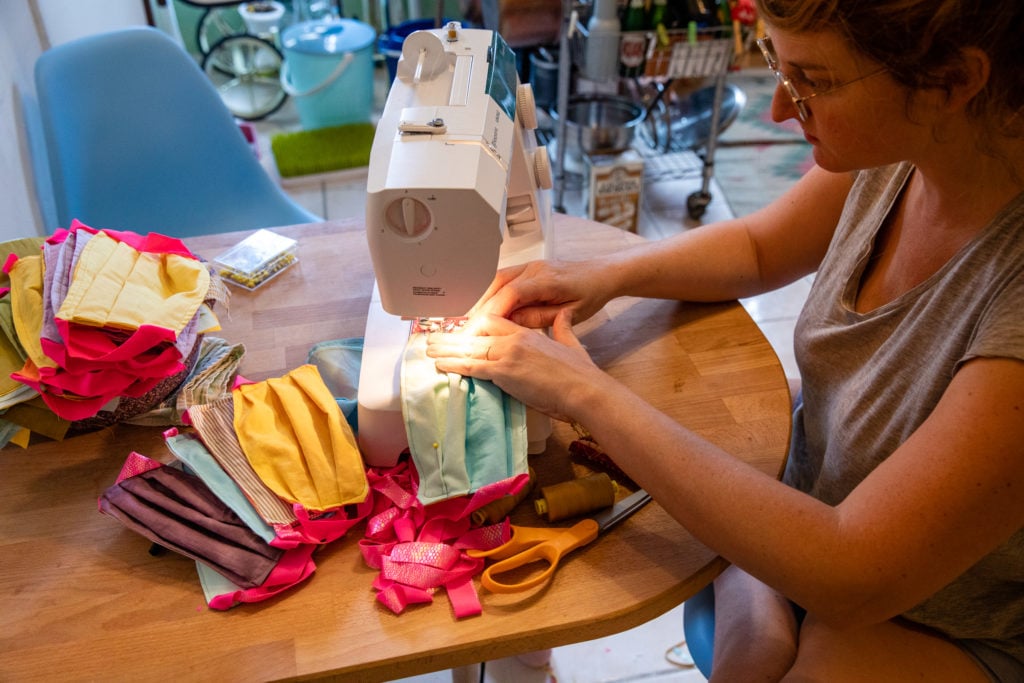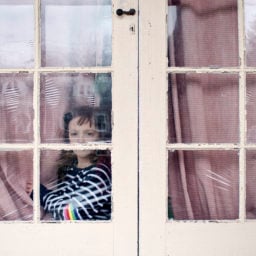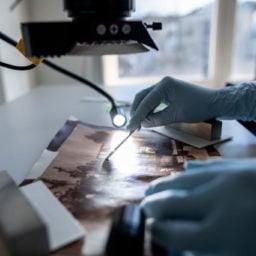Here’s a measure of how many artists have turned to making face masks during America’s coronavirus-induced lockdown period: inspired by the large number she’s spotted on social media, Cincinnati collector Sara Vance Waddell is already in the process of organizing an exhibition of artist-made masks.
“I thought, ‘there’s a lot of creativity in that. There’s a lot of meaning in that,'” Waddell told Artnet News. She has her own private 1,200-square-foot art gallery at her home for her collection of work by women and artists of color, but her hope is to open an exhibition of masks at a public venue, when social distancing rules allow.
“Some of these masks are ingenious—they are works of art,” she said. Waddell already has more than 50 artists from across the country lined up, including a number of contributions from the Women of Color Quilters Network, founded in 1985 by Carolyn Mazloomi.
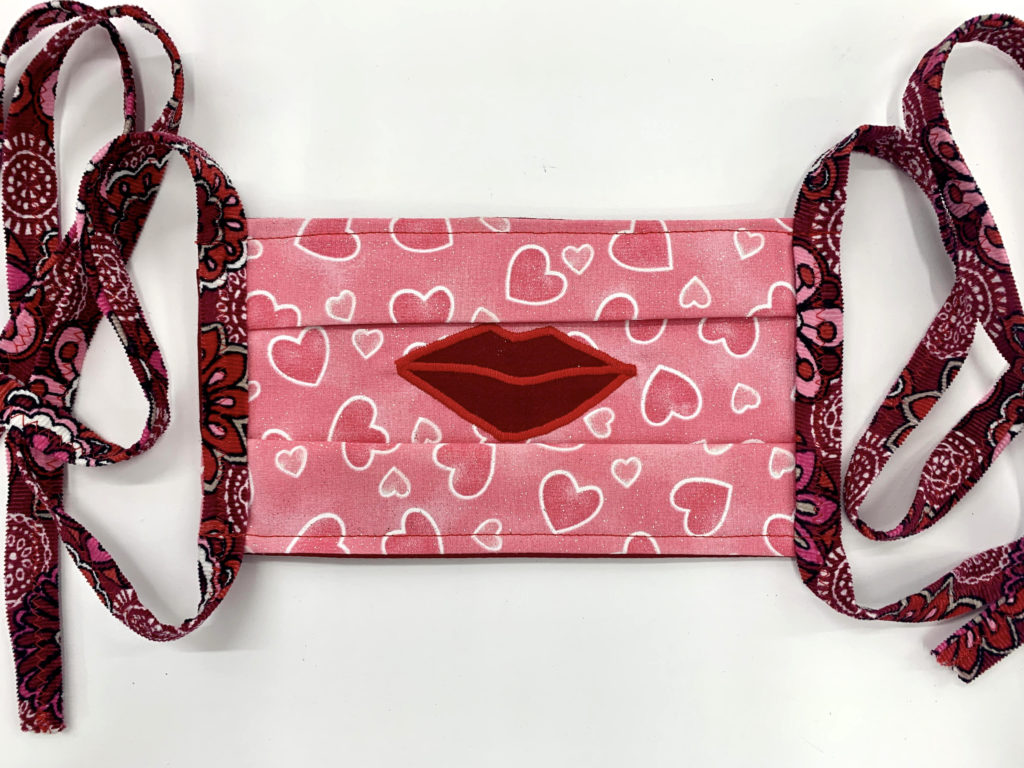
A mask by Sarah Stolar, from the collection of Sara Vance Waddell. Photo courtesy of Sara Vance Waddell.
Across the country, many artists have paused their normal studio practice to craft masks, either to give to those in need of them or to raise money via limited editions. They are united in their inspiration: the health crisis that has paralyzed the globe.
“I felt like I needed to do more than just stay at home,” Chicago artist Michelle Hartney told Artnet News in an email. So far, she has made about 100 masks, made from materials repurposed from a previous project, donating one to Chicago hospitals for every one sold for $25. “I feel a sense of responsibility to do all I can to prevent the spread of the virus and respect and honor those amazing souls risking their lives now for us—it’s the least I can do.”
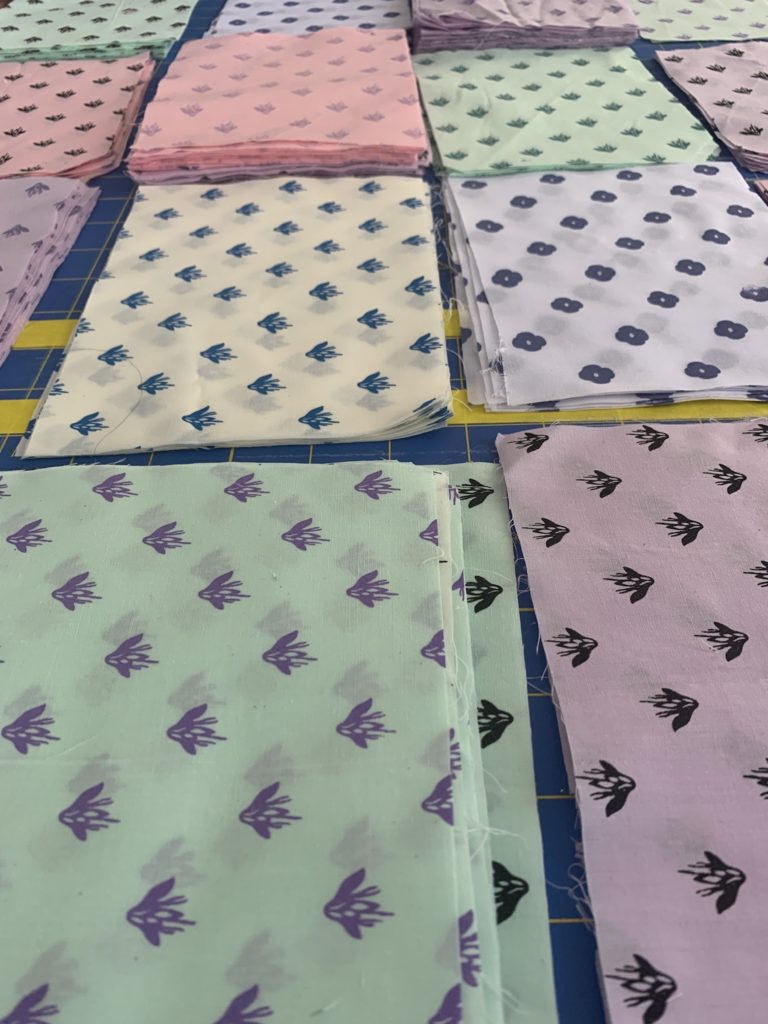
To make face masks, Michelle Hartney has been repurposing leftover materials from her earlier project “Mother’s Right,” in which she teamed with midwives and doulas to sew 1,200 hospital gowns representing every woman who died during childbirth in the US in 2013. Photo courtesy of Michelle Hartney.
Homemade masks are not as effective in blocking the transmission of the virus as medical-grade masks—Etsy prohibits sellers from making health claims about their products—but there have been PPE shortages at hospitals as the outbreak swept across the country. And, after months of advising that masks were unnecessary for the general public, the CDC issued new guidelines in early April recommending the use of homemade cloth face coverings for non-healthcare workers.
The majority of artists making masks appear to be women, in keeping with long-held views of sewing as “women’s work,” but there’s also the husband and wife team Beth Lipman, a glass artist, and Ken Sager, a leatherworker. They first started making masks for friends who were doctors—their cloth versions were better than nothing, they thought, in the face of dire shortages. At their home in Sheboygan Falls, Wisconsin, Sager does the bulk of the sewing, while Lipman cuts and measures the fabric ahead of assembly.
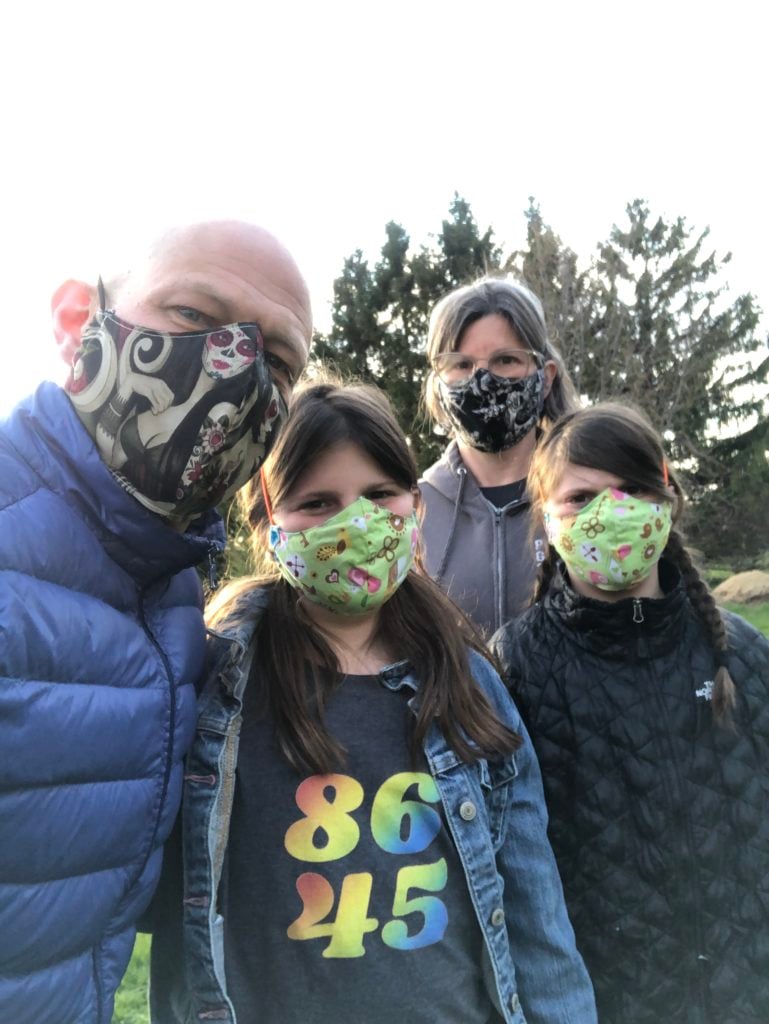
Ken Sager, Beth Lipman, and their children making their homemade masks. Photo courtesy of the artists.
They are now donating masks to organizations in need, and selling them at a nominal cost to the general public to offset the cost of supplies. “We have made about 425 masks,” Sager told Artnet News in an email. “We started by supplying them to medical professionals, [but] after a couple of weeks I realized if we didn’t start getting them out to the general public, we were really hitting the back end of the crisis and not helping to preempt it.”
Before the global heath crisis struck the US, Bay Area artist Stephanie Syjuco was two weeks into a residency at the Joan Mitchell Center in New Orleans. Abruptly forced to head home, she found herself locked out of her art studio on campus at UC Berkeley, where she is a professor, under the state’s shelter-in-place order.
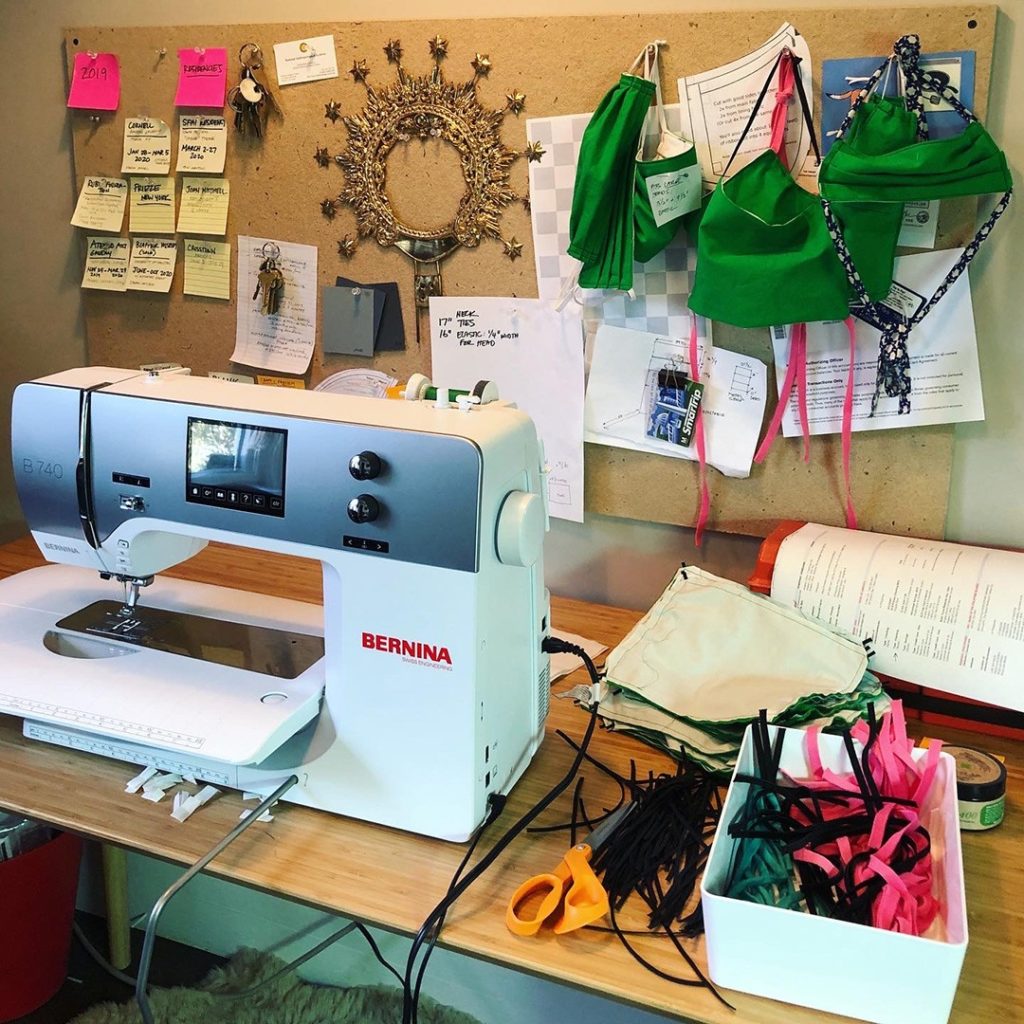
Stephanie Syjuco has been making face masks at home while her studio has been shut down due to California’s state-wide shelter-in-place order. Photo courtesy of Stephanie Syjuco.
“That cut me off from my normal art-making facilities, but at home I had the equipment to make masks,” said Syjuco, who recognized ahead of time that there would soon be a real need for this protective gear. “It was something I turned to in part because I didn’t really have another creative outlet, but I was also trying to preempt the demand.”
Since March 20, Syjuco has made close to 800 masks, donating them to “frontline and vulnerable communities who have been left out of the supply chain.” She has fundraised $2,000 for the project, raiding her own supply closet—textiles feature prominently in her sculpture and installation work—and turning to friends for additional materials.
“There’s a run on supplies,” Syjuco said. “The hot commodities are cotton fabric and elastic.”
Textile artist Natalie Baxter, of Ridgewood, Queens, is a self-described “fabric hoarder.” Since starting to make masks, she has been able to supplement her stash with an online order of cotton fabric. When elastic wasn’t available, she was able to sub in spandex to make ear ties.
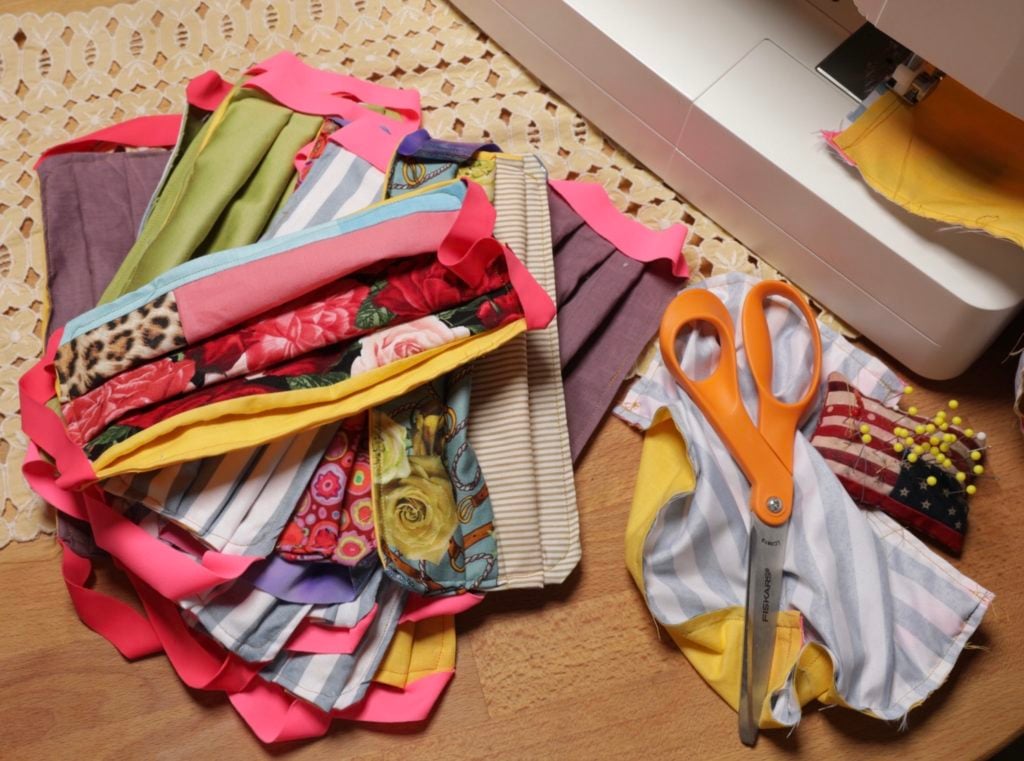
Natalie Baxter’s face masks. Photo courtesy of Natalie Baxter.
“I felt very helpless when this first started and was anxious to do anything to support healthcare and frontline workers,” said Baxter. Her grandmother taught her to sew as a child in Kentucky, but she rarely uses patterns, so making masks required a bit of trial and error. Nevertheless, Baxter has made over 300 face coverings, mailing them out individually with 70 cent stamps to avoid unnecessary trips to the post office.
“They have gone to doctors, healthcare providers, grocery store workers, food delivery workers, family, friends, and a lot of strangers all over the country, from Florida to California to Alaska and a few to Canada,” she said. “The masks are free, but some people have been extremely generous with donations for which I feel so grateful.”
Albuquerque artist Valery Jung Estabrook has often incorporated textiles in her practice. During the crisis, she has churned out 250 masks and 22 plastic face shields, which enable lip reading for the deaf community. She’s selling these for $20 each to support her practice, while giving away one in five, mainly to employees at the local post office.
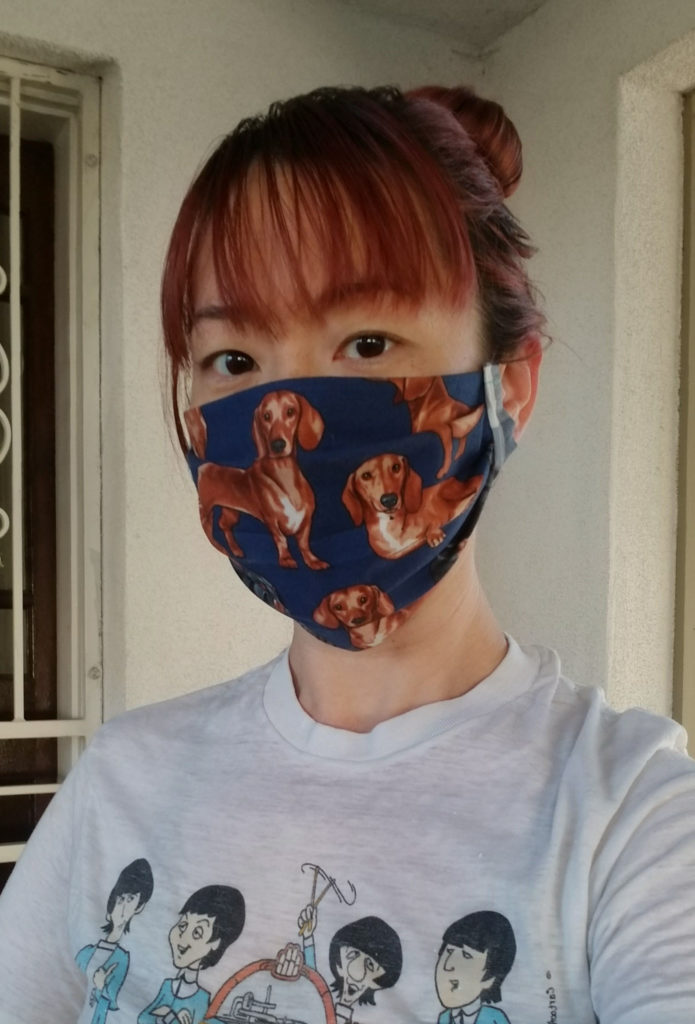
Valery Jung Estabrook in one of her handmade face masks. Photo courtesy of Valery Jung Estabrook.
Estabrook started making masks before the CDC recommended everyone wear one. “It was actually a little difficult finding resources for a design,” she told Artnet News in an email. “I chose a surgical-style mask designed by a Taiwanese doctor. The original directions were in Chinese (which I can’t read), so it actually took me a few hours to figure out the first mask!”
Rather than hand sewing them herself, artist Michele Pred has outsourced the process, enlisting a Canadian company to produce a signed, numbered edition of 200 “Art of Equal Pay” masks. They cost $32, with ten percent of the proceeds going toward relief efforts.
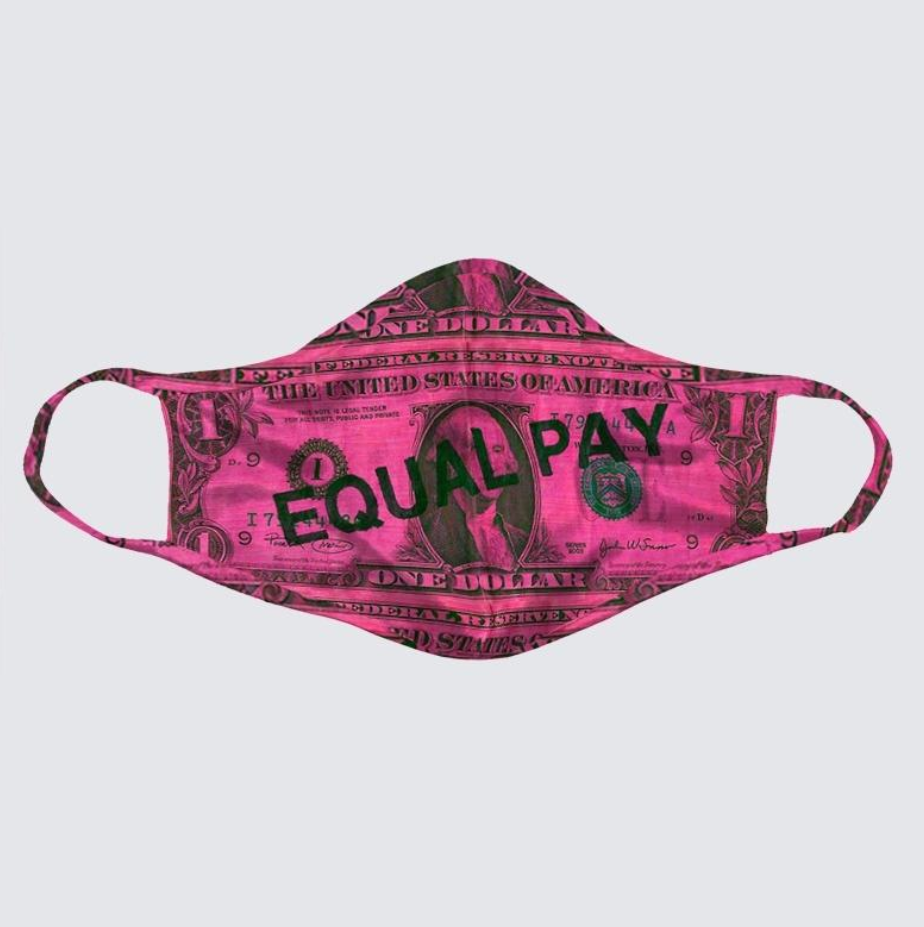
Michele Pred, Art of Equal Pay Mask. Photo courtesy of Michele Pred.
“I consider my masks to be a functional medical supply that are also an artist multiple,” Pred told Artnet News in an email. (She believes that she herself was sick with the virus, but so far has been unable to get tested.)
Stephanie Hirsch, a former fashion designer currently under lockdown in the Hamptons, is also treating her masks as limited edition works of art. She teamed up with curator Natasha Schlesinger, of art advisory ArtMuseNY to sell floral pattern masks reading “love” in capital letters, for $45, or $175 with hand-stitched Swarovski crystal beading. The first run sold out but a new edition is dropping May 15, with 20 percent of the proceeds donated to Direct Relief.
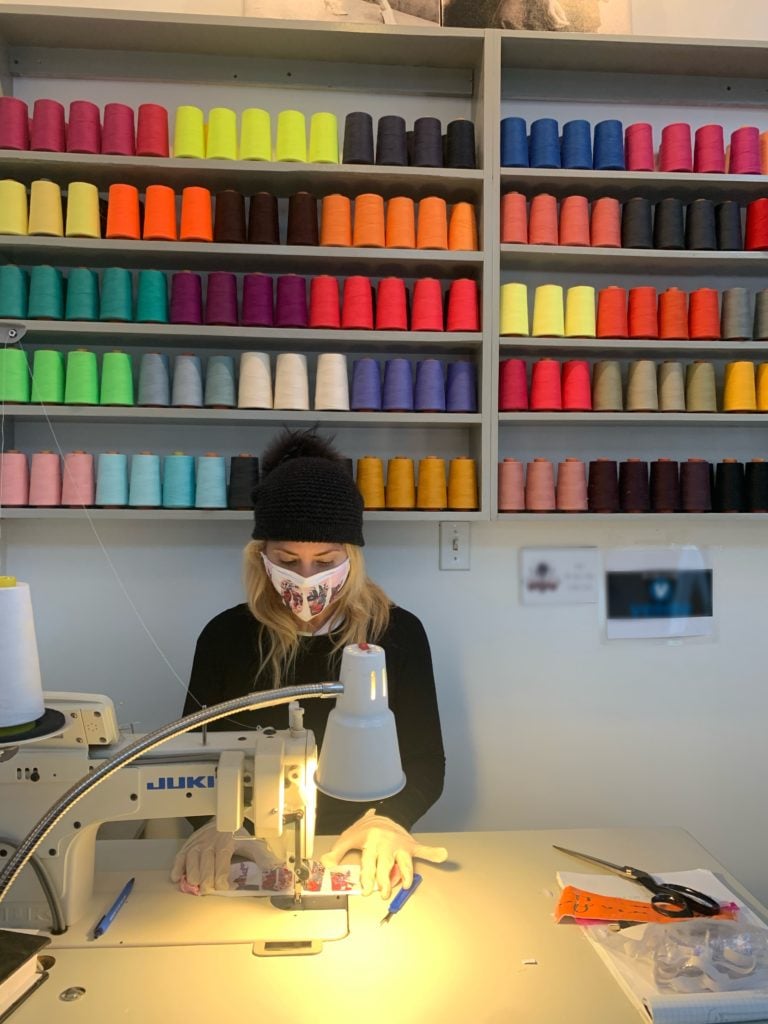
Artist Stephanie Hirsch wearing her collectible masks. Photo courtesy of Stephanie Hirsch.
With a planned residency in Lower Manhattan on hold indefinitely due to lock down, Hirsch has found in the face masks a crucial means of income that still allows her to give back to the community. “People are so appreciative that I have made my artwork more accessible, spreading LOVE not the virus,” she told Artnet News in an email.
Open Editions, which makes wholesale artist goods for museum shops across the country, started out making a few dozen masks for friends with leftover yardage from an artist project. Artist founders Lauren DiCioccio and Braden Weeks Earp soon realized there was a growing demand, and that it wasn’t easy for people to make masks for themselves.
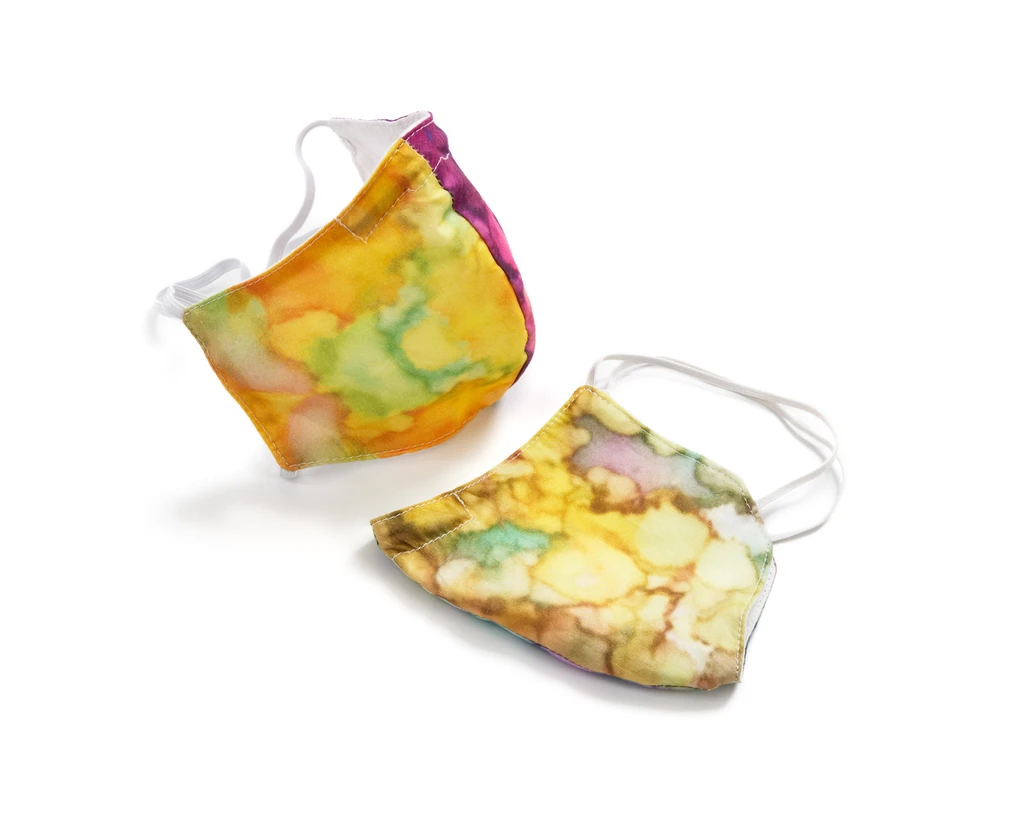
Margie Ramirez face mask from Open Editions. Photo courtesy of Open Editions.
The duo decided to scale up production, enlisting five artists (including Syjuco) to create face masks prints, and sending the fabric to the homes of its out-of-work sewers for construction.
A set of two masks is $28, and Open Editions is donating one mask to a nonprofit for each one sold, with a total of 1,275 donated to date. “Because the mask is something not so pleasant to wear on your face,” the duo told Artnet News, “we thought people might be more incentivized to wear them if they featured their favorite artists‘ prints.”
